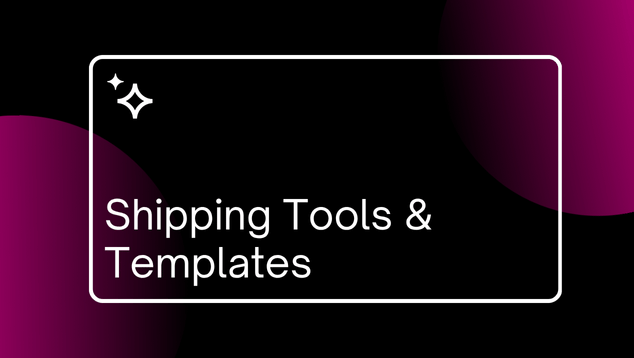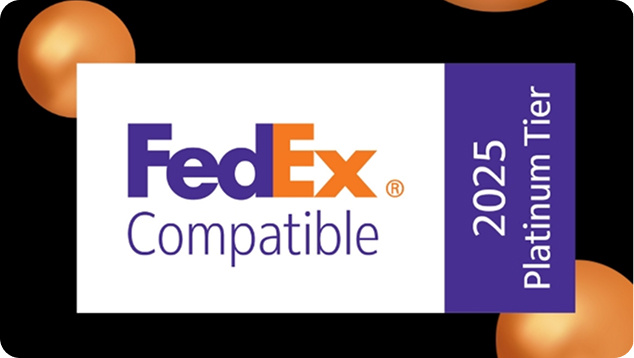Multichannel Order Management made simple: from basics to advanced tips
 Harvard Business Review reports that 73% of customers use multiple channels during their shopping trip. This trend has made multichannel order management crucial for businesses that sell products on different platforms. But managing orders across multiple sales channels creates major challenges.
Harvard Business Review reports that 73% of customers use multiple channels during their shopping trip. This trend has made multichannel order management crucial for businesses that sell products on different platforms. But managing orders across multiple sales channels creates major challenges.
Your business risks losing track of inventory, orders, and replenishment needs without a multichannel order management strategy that works. Each channel needs different fulfillment methods, and this complexity grows with higher order volumes. A well-implemented multichannel order management system reduces business risks, lowers sales costs, and gives you clear visibility of your operations. This piece guides you through simple concepts to advanced optimization techniques that streamline your multichannel selling operations.
What is Multichannel Order Management?
Multichannel order management acts as the foundation for businesses selling on platforms of all types. This system handles and fulfills orders naturally from multiple sales channels like e-commerce websites, physical stores, mobile apps, social media platforms, and online marketplaces. Retailers expanding their reach just need effective multichannel order management.
Definition and core components
Multichannel order management centralizes and synchronizes orders across different sales channels. The system lets you streamline fulfillment, shipping, inventory management, and order processing from a unified platform. It works like your sales operations' central nervous system that connects all channels while showing a consistent view of your business activities.
The basic components of a multichannel order management system include:
- Order consolidation: Gathering all orders from different channels into a single interface for unified processing
- Live inventory synchronization: Maintaining accurate stock levels across all platforms to prevent overselling
- Automated order routing: Directing orders to appropriate fulfillment locations based on predefined rules
- Centralized customer data: Collecting customer information whatever their purchase channel
- Shipping and logistics management: Streamlining carrier selection and shipment tracking
- Returns processing: Tracking and managing returns from all channels in one place
These components blend together to create a cohesive system that handles the entire order lifecycle from purchase to delivery.
Rise of order management systems
Order management systems' trip mirrors retail technology's broader progress. Businesses used manual, paper-based systems to track orders and inventory at first. Spreadsheets replaced paper records as computers became more available. This improved accuracy but still needed significant manual input.
On-premises order management systems came next. They provided dedicated solutions but remained limited by their physical infrastructure. Electronic Data Interchange (EDI) marked the next big move by establishing standardized electronic communication between businesses.
Cloud-based solutions launched the modern era of order management with unmatched scalability and flexibility. These systems blended with other enterprise platforms like ERP and CRM to create detailed business ecosystems.
Modern multichannel order management systems now use artificial intelligence, machine learning, and live analytics to optimize operations. These technologies enable better demand forecasting, smart inventory allocation, and customized customer experiences.
How multichannel is different from omnichannel approaches
Multichannel and omnichannel represent unique approaches to selling products on platforms of all types. This difference helps you pick the right strategy for your business.
Multichannel selling involves deploying several distinct channels independently to connect with customers and enhance market visibility. Each channel functions as a separate entity with its own dedicated marketing initiatives, inventory management, and customer support systems.
This approach prioritizes expanding product availability across multiple platforms over channel integration, focusing on maximizing reach rather than creating a unified customer experience. The strategy emphasizes channel-specific optimization, allowing businesses to cast a wider net while maintaining flexible, independent operations for each sales pathway.
Omnichannel takes an integrated approach where all channels work together to create a natural customer experience. Customers can start their shopping trip on one channel and finish it on another without disruption. The customer becomes the focus instead of the channel.
Multichannel can be visualized as a hub-and-spoke system—your product occupies the hub position, with separate pathways extending outward to connect with customers along the perimeter. In contrast, omnichannel dissolves these distinct pathways entirely, delivering a seamless experience regardless of how customers initially engage with your brand.
Most growing businesses start with multichannel order management before moving toward a fully integrated omnichannel approach as they scale up.
Key challenges in managing orders across multiple channels
Retailers face major operational challenges when they sell products on multiple platforms. These challenges can quickly destroy a retail strategy if ignored. Poor data quality alone costs companies about £10.24 million each year. This shows how badly ineffective multichannel management can hurt finances.
Inventory synchronization across platforms
Accurate stock tracking on different sales channels creates one of the biggest headaches for multichannel retailers. Your business faces serious risks without proper stock synchronization:
- Overselling: Your customers might buy items that you don't have in stock. This leads to canceled orders and unhappy buyers
- Stockouts and excess inventory: Poor coordination often means either too much money tied up in extra stock or lost sales from empty shelves
- Manual data entry errors: Many retailers still update their platforms by hand. This takes too much time and causes many mistakes
The problem gets worse when different channels use different formats for product details. To name just one example, systems might handle dates, prices, or SKUs differently. This makes automatic syncing very hard without special tools.
Order processing complexity and bottlenecks
Your business might scale chaos instead of growth as you expand to more channels. Each platform typically runs its own system. This creates scattered data and workflow problems. Traditional systems also don't handle orders well from websites, stores, distributors, and sales teams.
Many orders still come through email, PDF, and EDI. Staff must process these manually, which wastes time and creates errors. Teams spend valuable hours trying to piece together order details from multiple places when information isn't in one spot.
Customer data fragmentation
Companies scatter their information across tools, systems, and databases that teams can't easily access. This scattering has grown worse as customer touchpoints multiply and tech stacks evolve.
Companies lose lots of efficiency when they can't break down information barriers. Each channel usually collects customer data on its own. This creates mismatched profiles and makes personalization harder.
Teams can't see their complete data assets. Each department works with limited knowledge about business operations and performance. This often leads to wrong reports and poor choices.
Shipping and fulfillment coordination
Orders from different channels make fulfillment tough to coordinate. Fulfillment takes up to 18% of online-order revenue—about four times more than traditional channels. This makes it crucial for any multichannel strategy.
Different channels come with different shipping needs and customer expectations. To name just one example, online buyers want next-day delivery, while stores need different restocking schedules. Your logistics strategy must stay flexible and quick to balance these needs.
Smart inventory placement across warehouses becomes key for fast delivery. Poor coordination can make products appear available online when stores don't actually have them. This seriously damages customer trust.
Essential features of a multichannel Order Management System
Multichannel order management systems act as a technological bridge between businesses and customers across multiple selling platforms. Your system needs specific features that work together to create a smooth order fulfillment process.
Centralized order dashboard functionality
A user-friendly dashboard that combines all orders from different channels into a single view forms the foundation of any strong multichannel order management system. This hub lets you track, manage, and fulfill orders without platform switching. A well-configured dashboard shows every step of the fulfillment process, from order placement to delivery completion.
This combined approach lets you filter, sort, search, tag, and add notes to orders from one customizable interface. You can organize orders by delivery destination, fulfillment status, product SKUs, and other criteria to boost visibility and task priority. Users don't have to switch between multiple systems or spreadsheets, which reduces errors during order fulfillment.
Real-time inventory tracking capabilities
Immediate inventory management drives successful multichannel operations. Stock levels update instantly across all sales channels whenever changes happen. To name just one example, when someone buys a product on your website, the system adjusts stock levels on your Amazon and eBay stores automatically.
Detailed inventory visibility covers warehouses, stores, third-party logistics providers, and drop-ship partners. This helps manage commitments and available-to-promise inventory across channels, which links commerce with your supply chain to prevent customer disappointment. The system also shows which items sell fast versus slow, leading to smarter inventory choices.
Automated order routing and processing
Automation marks a key advancement in multichannel order management. Smart order routing directs orders to the best fulfillment centers based on location, stock levels, and shipping speed. This technology uses algorithms and live data to process each order efficiently.
Smart order routing helps fulfill orders from the most cost-effective location. The system balances stock across warehouses while cutting shipping costs and delivery times. The software picks the nearest fulfillment center to speed up shipping, which helps businesses meet delivery promises while reducing expenses.
Integration with major eCommerce platforms
Native e-commerce integrations play a vital role in any multichannel order management system. These connections link all your sales channels naturally without extra third-party apps. This cuts down connection problems while keeping data flowing smoothly across your ecosystem.
Strong software integrations power effective multichannel management. Sales channels must connect easily with order management and point-of-sale systems to track inventory and sales data accurately. Advanced systems support over 70 marketplace and sales channel integrations, which covers your entire selling ecosystem.
Analytics and reporting tools
Detailed analytics turn raw order data into practical business intelligence. A strong multichannel order management system puts all order information in one central dashboard. This shows how products perform across your business, not just individual channels.
The best reporting features include straightforward yet powerful tools that pull data from all sales channels. These give immediate insights about business performance. Analytics cover metrics like sales by channel, order volume, order value, and date comparisons. These tools spot trends and predict future product demand, which leads to better inventory planning.
Implementing your Multichannel Order Management platform
A well-planned and executed approach will help you implement a multichannel order management platform. The best system might not deliver results if you don't implement it properly.
Assessing your current order workflow
Your first step should be a detailed evaluation of your existing order management processes. This assessment reveals gaps and bottlenecks in your current workflows. You need to track how orders flow through your organization from capture to fulfillment. Pay attention to areas where delays or errors happen often.
Document your business requirements before you pick a new system. Expert reports show that understanding your company's needs plays a vital role when choosing software features that will solve your problems. This preparation helps you avoid paying for features you won't use while getting the ones your operation needs.
Selecting the right software for your business size
The many options available can make choosing the right multichannel order management software feel daunting. Success comes from finding a system that combines smoothly with your e-commerce channels without extra integrations.
Small businesses should focus on basic features that allow future growth. Mid-sized companies need better inventory tracking and reporting tools. Large enterprises should look for flexible platforms with advanced automation and enterprise-level integrations.
Data migration best practices
Data migration goes beyond moving information – it needs accuracy, security, and speed. Check your data before migration to remove outdated or duplicate entries.
A detailed data map is vital for smooth migration. Good mapping stops problems with order history, customer records, and financial reports. Make sure you back up everything and create a recovery plan before starting the migration.
Staff training and change management
Good staff training makes system adoption successful. Create a training plan with realistic goals for different team roles. Pick training tools that work well for both trainers and trainees. Use visual aids and interactive elements to help people learn better.
Keep everyone informed about timelines and who does what during implementation. Research shows that poor communication often leads to delays and mistakes. After launch, schedule regular updates as the system changes to keep your multichannel order management platform running smoothly.
Advanced optimization techniques for Multichannel sellers
Your multichannel order management system's optimization techniques will substantially boost operational efficiency at the time it goes live. These strategies cut costs and make customers happier through quick and reliable order fulfillment.
Intelligent inventory allocation across warehouses
Smart allocation of inventory between locations lets you automatically replenish stock through warehouse transfers. This reduces new inventory purchases and system-wide stock levels. Multi-location features can spot excess stock in low-demand areas and suggest moving these items to fulfill orders elsewhere. The system prevents stockouts and makes the best use of warehouse space.
Virtual warehousing packs a powerful punch. Some items have demand too low or irregular to stock at single warehouses. Virtual warehousing combines demand from multiple locations through inventory pooling. These locations work together as one virtual warehouse that meets regional demand with minimal inventory.
Dynamic shipping rules for cost efficiency
Dynamic shipping rules create pricing models that adapt to live factors like demand, fuel costs, capacity, and weather. Data-driven algorithms help calculate each shipment's most efficient price. This maximizes profits while meeting customer expectations.
The best strategy uses both contract and spot rates. Strong relationships with multiple carriers give you competitive pricing and flexibility as market conditions shift. Modern Transportation Management Systems compare carrier rates automatically while factoring in transit times and service quality.
Automated exception handling for order issues
Exception management stands out as a crucial automation target in multichannel selling. AI systems flag problems and start fixes without human input. This technology handles over, short and damaged items, return to vendor items, and purchase order processing that needs acceleration.
These platforms show your entire exceptions process. They track who resolves issues, the order's current stage, and resolution time. This clear view speeds up responses to urgent problems.
Cross-channel customer data unification
Data unification brings customer information from every source into one clear picture. A proper setup removes data inconsistencies and duplicates. It gives all users clean, accurate, and reliable information.
Unified customer data does more than prevent missed segmentation or duplicate emails. It builds detailed profiles for each person. These profiles mix customer-provided details with digital behavior like location, browsing history, and device preferences. This complete view helps create targeted marketing campaigns that reach customers through every channel.
Conclusion
Modern retail success depends on a vital element – effective multichannel order management. Businesses can substantially reduce operational complexities with centralized order processing, up-to-the-minute inventory tracking, and automated routing systems. These improvements help meet customer expectations across sales channels efficiently.
The successful implementation starts with getting the full picture and selecting the right system for your business size. Your properly configured multichannel order management platform eliminates data silos and prevents inventory discrepancies. The platform also streamlines fulfillment operations smoothly. Smart inventory allocation and dynamic shipping rules help optimize costs while maintaining quality service.
Businesses should treat multichannel order management as an ongoing process instead of a one-time setup. System optimization, staff training, and data unification efforts help multichannel operations evolve with market needs. So this strategic approach turns complex multichannel challenges into opportunities that drive growth and boost customer satisfaction.
ShippyPro is the complete shipping software for online and offline retail. With Label Creator, Track & Trace, Easy Return and Analytics features, our software simplifies your shipping operations. ShippyPro integrates with over 180 carriers and 80 sales channels, making it compatible with a wide range of products and use cases.













